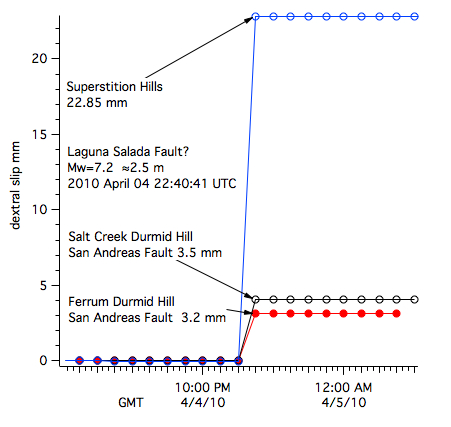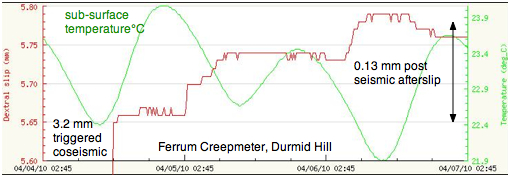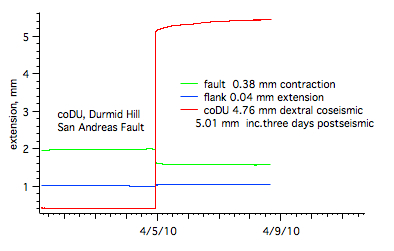Baja Earthquake 4 April
Laguna Salada Fault Mw=7.2 approx. 2.5 m dextral slip
2010 April 04 22:40:41 UTC UPDATED 11 April
The Mw=7.2 Baja earthquake, which occurred on the Laguna Saluda fault system, shook many of the faults of California causing significant triggered slip. Click on figures for pdfs.
Link to post seismic investigations 5-11 April
Three creep-meters in southern California (on the San Andreas Fault at Durmid Hill and one on the Superstition Hills fault near Brawley) recorded slip of up to 22.85 mm. Slip associated with these incremental slip episodes occurred between two transmitted samples at 10:40 GMT. Samples are 15 minutes apart and have a resolution of 10 microns. All the recorded slip is dextral.
Surface cracking occurred on the Superstition Hills fault south of Imler Road, near the creep-meter. A 28 mm creep event occurred here in October 2006 with a much different time history from the abrupt offset observed 4 April. Note that all the triggered slip occurred in the region of enhanced Coulomb failure.

(Above) Preliminary Coulomb failure map (from Shinji Toja) indicating that observations of triggered slip lay in regions of <0.2 bars enhanced failure stress. The Imperial fault lies in a region of reduced failure stress.
Triggered Post-seismic Slip?
At Ferrum and Durmid afterslip followed the co-seismic triggerd slip. The trace above shows a thermoelastic signal of 3 micron/degC superimposed on a what is prosumably a logarithmically decaying offset at Ferrum. The San Andreas fault here has slipped an additional 0.13 mm bringing the offset to 3.33 mm by 7 April, within 0.17 mm of the Salt Creek instrument, and within the uncertainty of Salt Creek calibration caused by its uncertain obliquity of the fault. The similarity in the slip at the two creep-meters (1.36 km apart) suggests that widespread slip elsewhere along the fault. Data from a third Durmid Hill creepmeter (33.4147N 115.7985W), 5.6 km to the SE has the highest observed coseismic slip (5 mm) , including 0.25 mm of post-seismic triggered-slip.
The above figure shows 4.76 mm of slip coseismic triggered slip observed at coDU, SE of BatCave Buttes on Durmid Hill, and data from an experimental fault normal creepmeter that measured 0.4 mm of fault normal contraction and 0.04 mm of fault-flank extension during the triggered event. The photo below shows discontinuous en-echelon cracks found along the fault near the creepmeter. The caliper is aligned along the fault trace.
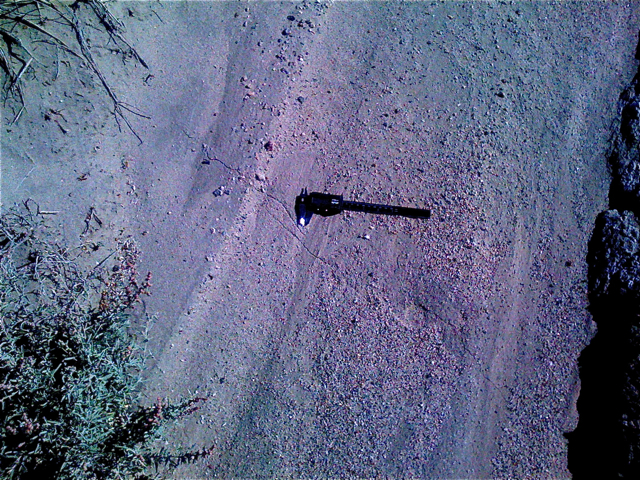
Above photo -Southern San Andreas triggered slip. On the Superstition Hills fault surface cracking was significantly easier to follow. Examples from near the creepmeter north of Imler Road, and from Site 3 in the Naval Bombing Base are shown.
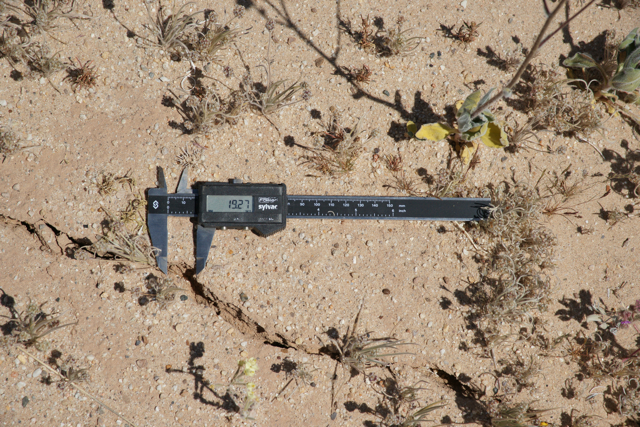
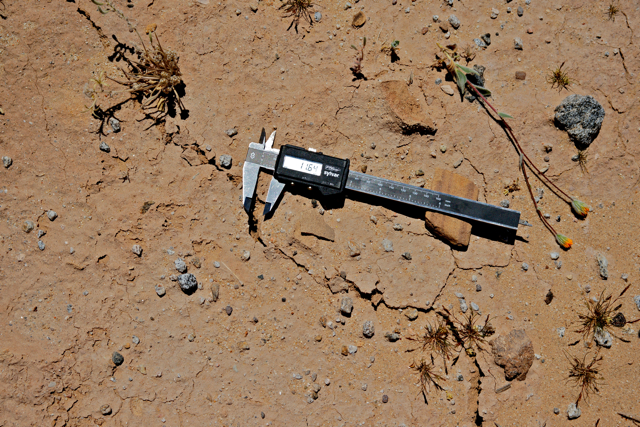
Upper figure shows 19.27 mm of dextral shear near the SH creepmeter, and 11.64 mm near Site 3 (32.9728N,115.7528W). Cracks are discontinuous and represent low estimates for true slip.
Creep meters as far north as the Hayward fault were also perturbed. The figure below shows 40-60 microns of slip at Oakland Zoo (two sensors) and Temescal Park near Berkeley.
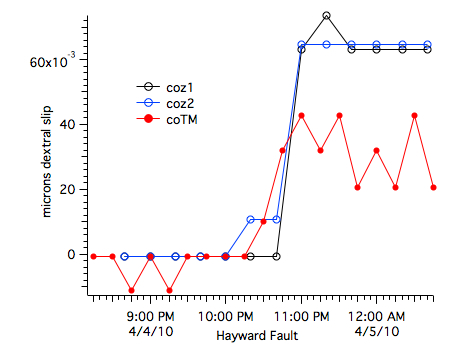
It is considered unlikely that the gentle accelerations from the surface waves from the earthquake were sufficient to have jostled the instruments mechanically in the Bay Area. Slip on the Hayward fault of a few tens of microns is most likely to have occurred as slip confined to the uppermost 10-100 m of the fault.

